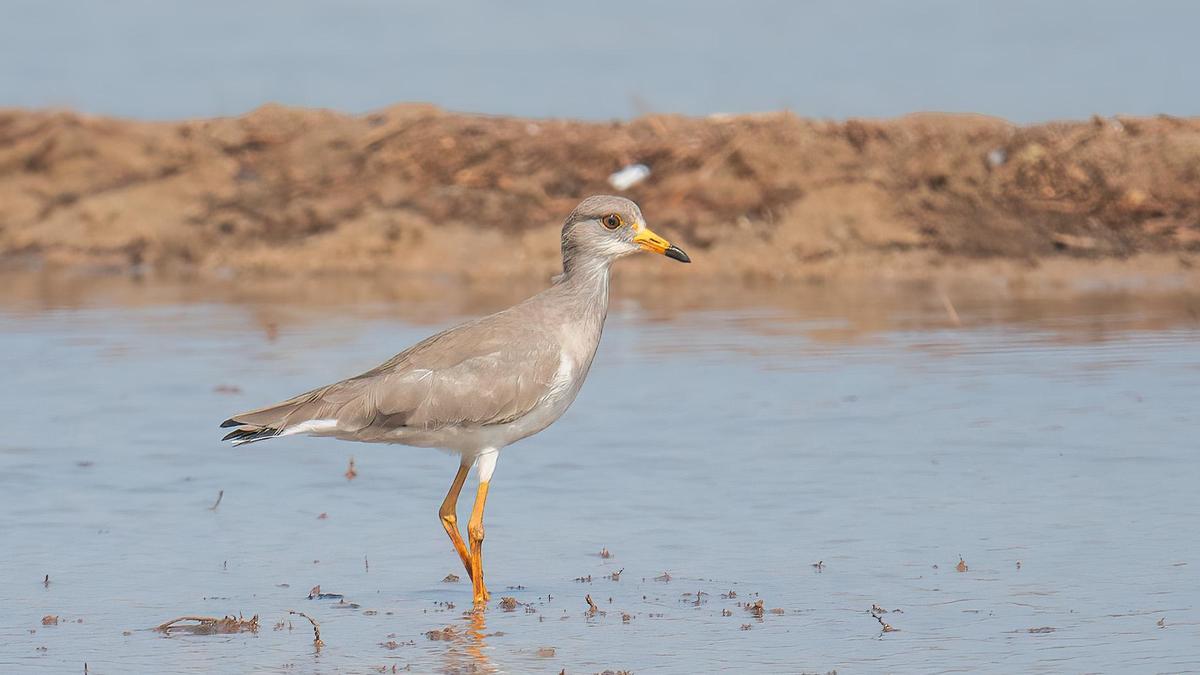
Low bird count in Kole wetlands in Thrissur worry birders
The Hindu
Alarming decline in bird species at Kole wetlands of Thrissur leaves enthusiasts puzzled, calls for further research.
The plummeting number of ducks, Openbill Storks, Grey-headed Swamphen, and Whiskered Terns in the Kole wetlands of Thrissur has left bird enthusiasts baffled.
The recently concluded annual water bird count revealed an alarming drop in the number of birds from these species.
Only around 1,000 terns were spotted in the wetlands, a sharp decline from nearly 10,000 in previous years. This year, only 576 swamphens were found, down from about 3,000 in past counts. While the number of Openbill Storks dropped significantly, the number of Painted Storks went up significantly. As many as 55 Openbill Storks and 261 painted ones were spotted during the exercise, according to birders.
“The reported low availability of feed and habitat changes may have influenced the presence of birds in the Kole wetlands. The decline in numbers, as revealed in the latest bird count, calls for extensive studies,” said P. O. Nameer, State coordinator of the Asian Water Bird Census.
Birders covered 11 major spots during the survey. Species spotted included the Peregrine Falcon, Pallas’s Grasshopper Warbler, Richard’s Pipit, Greater Spotted Eagle, Indian Spotted Eagle, Black-capped Kingfisher, Indian Thick-knee, Curlew Sandpiper, Eurasian Curlew, Ruddy-breasted Crake, Cinnamon Bittern, and Grey-headed Lapwing.
Malik Fasil, Arjun Suresh, Abhin M. Sunil, and Manoj Karingamadthil spoke during the inaugural session.

“A small evergreen tree native to South America, it is reported to have been introduced to our parts in the 16th century. It “adoption” could have been the result of the ornamental value it brought to a landscape: it puts out striking bluish purple flowers that attract butterflies and has bright yellow-orange fruits. In Tamil, it is called seemai vairamaram,” says T.D. Babu, a member of the Chennai District Green Committee and a key member of tree conservation organisation Nizhal. Babu underlines its special features — “considered densest and water-proof, this tree’s has been used in ship building. Its resin and bark are said to have medicinal properties. These factors led to its commercial exploitation and dwindling numbers.” In light of the threat of extinction faced by this tree, one would expect more care to be given to the clutch of Roughbark lignum-vitae trees found in Chennai. One of them has the Queen Mary’s College Campus for an address. Babu notes that the base of the tree has suffered damage, not natural but human-inflicted in the past. It also displays “wounds” further up its gnarled frame — an amputated branch. Babu wants the state of the tree’s precincts to reflect its preciousness. Currently, the earth it stands in is overrun with weeds.

Amid pressure on the Karnataka government to hand over the H.N. Nagamohan Das Commission report on internal reservation to a Cabinet sub-committee to study it, several Dalit organisations, under the banner of Federation for Social Justice for Scheduled Castes, will start their indefinite protest from Monday morning, seeking immediate implementation of the report.

 Run 3 Space | Play Space Running Game
Run 3 Space | Play Space Running Game Traffic Jam 3D | Online Racing Game
Traffic Jam 3D | Online Racing Game Duck Hunt | Play Old Classic Game
Duck Hunt | Play Old Classic Game









